My perspective is that I want to water fruit trees and vegetable plants enough so that they thrive — not just survive — while also trying to get the most production out of every drop.
This is, of course, much easier said than done. But here are five strategies that I use to at least try to achieve both of these goals.
1. Prune, in winter and in summer
I never want more fruit from a tree than I can consume or share. One way to control the fruit production of a tree is by keeping down its size. Coincidentally, this also controls a tree’s water use.
The amount of water a tree uses is directly related to how many leaves it has. More leaves equals more water use. Fewer leaves equals less water use.
In practice, this means that I continually prune my nectarine, apricot, apple, and pluot trees down to six or seven feet tall. I prune both in the winter and in the summer.
I do similar pruning of citrus, avocado, and others. And I prune to reduce the size of fruiting vines, such as passion fruit and grape.
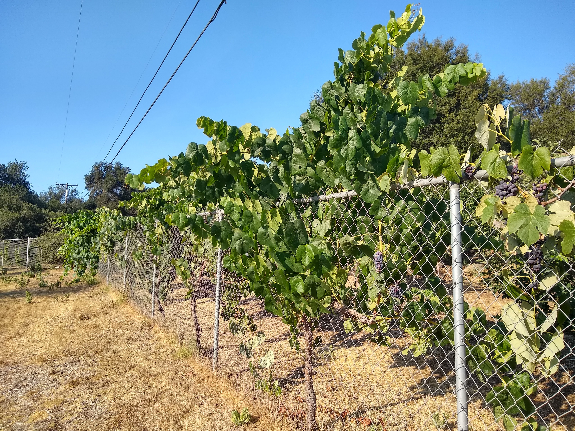
(My posts on summer pruning of deciduous fruit trees, and pruning citrus, and pruning avocados.)
How exactly does this pruning get you more fruits and vegetables? By freeing up water for other plants.
2. Remove underutilized and underperforming plants
Another way to free up water for other plants is by removing any that aren’t giving a good return on your irrigation investment. I cut down a Jan Boyce avocado tree last week because it was growing weakly and had been doing so since I planted it three years ago. Time to cut my losses.
I also pulled out some celery plants last month because I’d made the mistake of planting more than my family wanted to eat.
There’s no point in continuing to water such plants, especially when you could be using that water on plants that would perform better or be used more.
3. Walk the lines
If you use an automatic irrigation system, then I think the best time to set it to run is a time of day when you are usually at home. Furthermore, you should make it a habit of having a quick look at the drip emitters, bubblers, or sprinklers as they run. “Walk the lines,” as they say.
I learn something almost every time I walk the lines. For example, the other day I noticed that a low branch on an avocado tree was blocking the water coming from the tree’s sprinkler. A few days earlier, I was able to see that an emitter on the drip line under my boysenberry bush was clogged. No wonder it didn’t look as lush as it can.
(More on this in my post, “What is the best time of day to water your plants?”)
4. Shade
Not all plants need full sun in order to produce optimally, and some do better with some shade, particularly in the summer, especially if you live away from the beach.
I’ve found that blackberries and raspberries do very well without receiving full sun. This was the case when I lived near the beach, and now that I live inland I find it actually necessary to give them less than full sun in order to get the highest quality berries. I plant them east of large trees, as I’ve shown in my post on growing these cane berries.
I use 30 percent shade cloth over some of my peppers nowadays. Small-fruited types like Cayenne don’t need this, but large-fruited types like bells or Poblanos turn out better with the midday sun muted, as they otherwise show sunscald wherever the shoulders of peppers are not covered by leaves.
Now how does this save water? More higher quality fruit means less waste. Also, plants in less sun use less water so in essence you can get the same amount of production out of some plants while applying less water just by reducing excess sun.
How do you know which plants to shade? Experience goes the farthest in figuring that out, as it varies a lot yard to yard, but if you see any plant or fruit getting sunburned despite your giving it ample water, try shade.
5. Double up
Try to get multiple uses out of water. Sometimes this can be done literally, such as by placing potted plants over the root zone of an in-ground plant: any water that runs out of the bottom of the pots will wet the soil below and be used by the in-ground plant.
Other times this strategy can be used in a less literal form by simply growing plants in groups. I use this idea most often by planting vegetables under fruit trees. Both the vegetables and the fruit trees usually grow well by sharing the water given to the fruit tree. That is, I use the fruit tree’s sprinkler or dripline to water both plants without increasing the volume.
You might wonder if I had just been overwatering the fruit tree before such that I’m not now getting more fruits and vegetables out of less water but only wasting less water. I can’t say for sure that that’s not the case. But at least it does feel like I’m getting more from less so I use this doubling up arrangement in various ways all over my yard.
(I also often plant tomatoes or corn over my strawberry patch.)
(More on ”Growing vegetables under fruit trees.”)
Maybe you can apply one of these ideas in your yard too? Sure feels good — almost like cheating — when you get more from less.
All of my Yard Posts are listed HERE

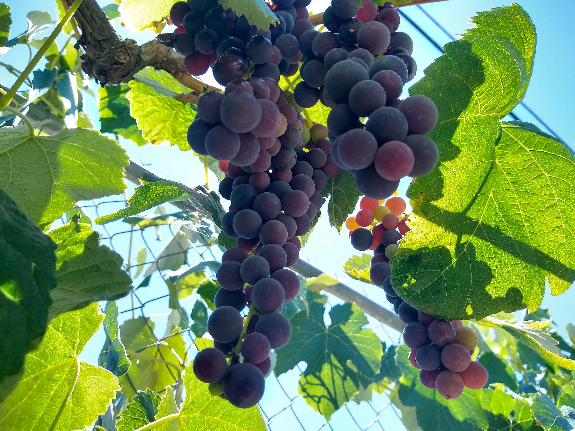
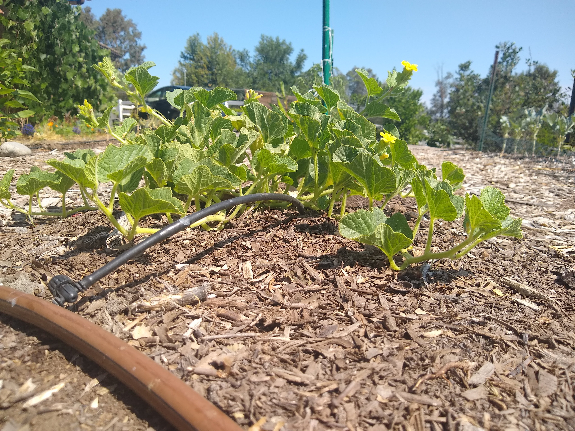

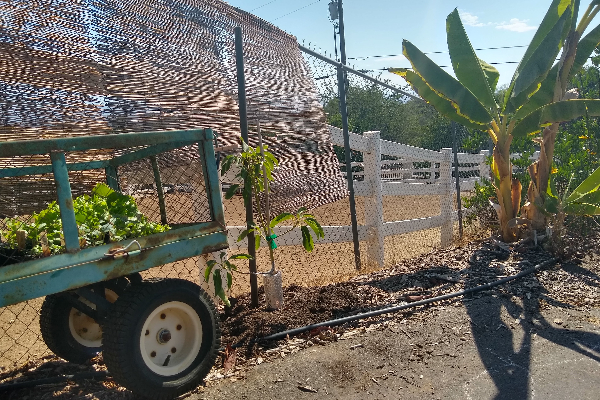
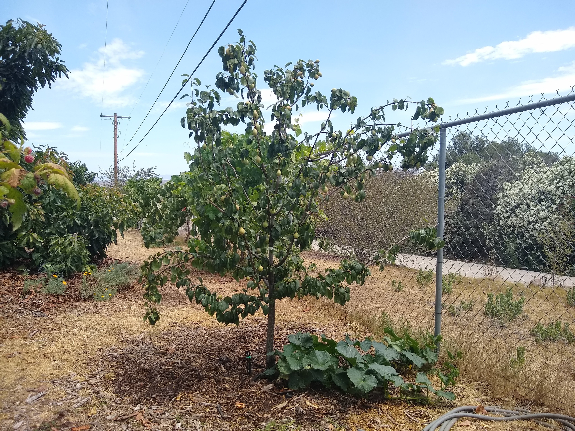
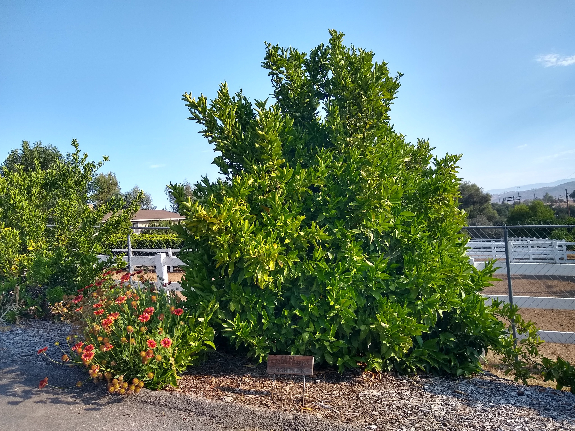


The leaves at the top of my avocado tree look very wilted. The soil feels damp down an inch or so. The more water I give it, the worse it is looking. Can this be from too much water? The tree is about 3 feet tall and was planted a month ago.
Hi Susan,
If the leaves don’t perk up, then thirst isn’t the problem. It could be that you are incorrectly identifying the leaves as wilted. In other words, maybe they are droopy for natural, healthy reasons. See examples in my post on reading avocado leaves: https://gregalder.com/yardposts/reading-avocado-leaves/
Or as you mention, it could be too much water. See my post on how much water to give a newly planted avocado tree like yours: https://gregalder.com/yardposts/how-to-water-a-newly-planted-avocado-tree/
Or it could be that a gopher has eaten some roots and therefore the tree will wilt no matter how much water you give it. Poke around to check for that.
Let me know what you discover.
Hi Greg,
I tried planting potatoes at the drip line of my avocados. It worked and I got a beautiful crop.
Many thanks.
Lorie
Awesome, Lorie. Good to hear that’s worked for you too. I’ve seen it work in so many yards now that I can’t think of a situation where it wouldn’t.
Hi Greg,
I’m not a regular reader, but when I come to your site for answers, I always find what I need. Thank you so much for the practical advice, hard-won expertise, and simple common sense you give so freely to us southern California gardeners.
Best wishes,
Alex
Alex! Thank you so much for taking the time to write this. Made my day.
Hi Greg, Good points on watering. I think size control of fruit trees is often overlooked, and especially the effect, or control, of water usage by said tree. I was chatting with my neighbor who has gorgeous 30′ tall Hass avocado tree who was lamenting the cost of watering it (city of San Diego). That chat made me thankful I’m only letting my avo trees only get 9-11′ tall: plenty of fruit to have & share, and only watering for that amount. The avocado trees are my biggest water users, next are citrus, and followed by deciduous fruit trees, by virtue of them going dormant.
Hi Greg.
I am formerly from the Bay Area, and have turned to you for many answers to avocado questions. Now I need your opinion on something I’d like to try here in Southern Oregon. I am planning to build a large greenhouse – 24 x 36 with a 12′ peak. The idea is to plant my avocado trees into raised beds, or large pots, in a controlled environment. Which do you think will give me a better chance of getting fruit?
Hi Cindy,
I would go for raised beds unless the soil below has very slow drainage. Raised beds should allow for a bigger root system and therefore a tougher tree.
Thanks. That was my first idea, but worried if the ground would be warm enough in the winter. I will try it that way, and let you know how it works.
You mentioned gophers eating the roots of trees. I have always been able to trap gophers, but I have one that foils the trap every time, and she had a litter to spread even more of them. Ground squirrels are also a big problem here in Yorba Linda, and a few rats, as well. I don’t want to use poison for all the good reasons. So I’m building an owl nest box to put on my back slope, hoping for an occupant soon. It will be over 12′ high among some native trees with a view of my fruit trees & veggies. I’ve prayed for an owl female to come prepared for a feast.
re gopher control:
I’ve shot,,trapped ,blew up tunnels-BUT the most effective method for me has been to starve them out!
My ground in the san fernando valley has shrunck a FOOT in the last 6 years and won’t retain water any more ,so I put wood chips on all of it -2-3 feet deep starting 3 years ago.
I got the chips from CHIPDROP and tree services for free and what a difference in my soil!
Back to the gophers– the mulch prevented weeds and grass from growing ,so the gophers and ground squirels starved out and evacuated the premsis!!
Now I’m replanting my orchard -I lost 29 avacado trees in 2008 due to no water – now I water very little be cause the soil is damp around the new plantings of avos,fruit trees.guavas ,etc and when the occasional gopher shows up ,it’s pretty easy to trap or shoot him.
I can’t brag enough about my soil -I planted two 2 year old bare root apricot trees ,i got from laguna hills nursery in May and they both set fruit that the birds enjoyed and are now 6feet tall – amazig – this is like my soil was in the 70’s.
I’ve owned and cared for this property since 1976,so I have an accurate history of it
I’ve resorted to raized vegatable beds because of squrirels ,but the gophers have’t learned to climb yet,rats, coyotes and other critters are still taking more than thier share
I really injoy this blog – Thanks Gary for your efforts.
Question: can you still get a Lyon avacado tree or scion?Where could I get a Nimloh tree or cutting?
regards
Robert
Is there any reason NOT to plant flowers that attract pollinators directly under a fruit tree?
Hi Christine,
The only one that comes to mind is planting a tough flowering plant under a wimpy young fruit tree. For example, I saw someone plant our native buckwheat right next to a new avocado and the buckwheat’s roots were so competitive that the avocado could not get enough water to get established until the gardener hacked the buckwheat back and watered a whole lot more.